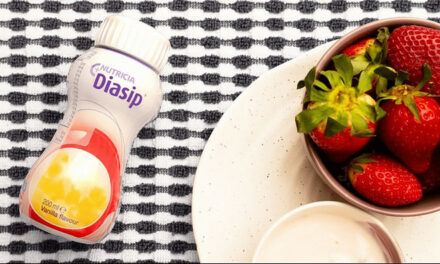Foods and drinks are often debated on, trying to decide whether they’re good for, or bad for, diabetics. When looking at a food or drink, trying to come to a conclusion about how it will affect diabetics, many things are looked at and considered. Mostly nutrients, benefits, and other facts about the food or drink item. Well, today, we’re not going to talk about a drink, or even a food, per se. Instead, we will be talking about a grain, that, in very simple terms, is basically a type of grass. And that grain is barley.
We’ll be discussing what exactly barley is, the different types, the nutrition it holds, and then all of the benefits it may have, as well as possible risks of eating it. For example, Can Diabetic Patients Eat Barley?
So, let’s get started.
What is Barely?
Barely is a major cereal grain that is grown globally in temperate climates. Its part of the species called Hordeum Vulgare, and it’s actually a member of the grass family.
Barely was actually one of the first cultivated grains ever, specifically in Eurasia. It can be traced back as early as 10,000 years ago. Barely, though can be cooked and eaten on its own, is a grain that people typically cook into something, such as various soups, stir-fries, and other dishes.
Now that we’ve discussed what barley is, let’s start talking about the different types of barley that exist out there, and what their differences are.
Types of Barely – What Are Their Differences?
Here are the different types of barley, and what makes them different from each other.
1. Regular barley
This is barley straight from the filed, where it grows.
It’s usually called “covered barley”, as it has a tough and inedible outer hull around the barley kernel. You have to remove the covering before it can be eaten.
2. Hulled Barely
Hulled barley, which is sometimes called “dehulled barley” is barley that has been minimally processed to remove only the tough inedible outer shell.
3. Hulless Barely
This is a type of barley that has an outer hull, but it’s so loosely attached to the kernel that it typically falls off on its own during harvesting.
4. Barely Grits
This is barley kernels that have been cut into several pieces, making them grits.
Read the label carefully on this one. Grits that are from hulled or hulless barley are whole grain, but grits from pearl barley are not considered a whole grain.
5. Barely Flakes
Barely flakes is basically barley oatmeal. The barley goes through the same process that other oats do in order to make it into oatmeal.
- 6. Barely Flour
This is barley that has been turned into flour. So, basically, flour that contains/is made out of barley. Be careful though, because this contains gluten.
7. Pearl Barely (not a whole grain)
Pearl barley has been polished, or “pearled”, as some say, to remove the outer bran layer along with the hull. Because of the process, it goes through in order to be considered “pearl barley”, it is not considered a whole grain.
8. Quick Pearl Barely (not a whole grain)
Quick pearl barley is a type of barley flake that is made out of pearl barley. It’s a barley flake that cooks in about 10 minutes, because it’s already been partially cooked and dried while going through the flake-rolling process.
Regular barley flakes can be whole grain, however, since these flakes are specifically made out of pearl barley, they are not considered a whole grain.
Now that we’ve discussed the different types of barley, let’s move on to what exactly is in barley, and what nutrition it holds.
What is in Barely? What Its Nutrition Content?
The nutrition content in barley is in the table below:
|
Nutrient |
Amount |
|
Total Fat |
4.2 g |
|
Cholesterol |
0 mg |
|
Sodium |
22 mg |
|
Potassium |
832 mg |
|
Total Carbohydrates |
135 g |
|
Protein |
23 g |
Is Barely High In Sugar?
No, barley is not high in sugar. In fact, it has little to no sugar at all, making it a very smart choice for diabetics.
Barely contains more natural, more humble ingredients, and practically no sugar in the slightest. So, this is not something you have to worry about when you consume barley.
Now that we’ve discussed the nutrition and sugar level in barley, let’s talk about all the health benefits that barley can potentially offer to people.
Health Benefits of Barely
Barely has many health benefits, most of which the majority of people aren’t aware of. Well, today, we’re going to go through some of the top benefits of barley that you may be unaware of.
So, let’s get started.
- Supports the immune system
Barely, specifically when turned into barley water, is known to support your immune system with its vitamins, minerals, and other nutrients.
- Helps with weight loss
Barely tends to make you feel full after eating it, meaning it will reduce hunger, which can potentially lead to weight loss as time goes by.
- Easy to add to your diet
Barely is an easy food to slip into just about everything you may consume. You can even drink it, if that will help you get it into your diet. Yes, drink it. But we’ll continue on that subject in just a little bit.
- Can help with digestion
Barely is a food that is high in fiber, meaning it’s a good food to consume if you’re trying to find something to aid digestion.
- May help prevent gallstones
Like I said above, barley is a food that’s high in fiber, which not only can help with digestion, but it can potentially prevent gallstone, and canteen reduces your risk of needing gallbladder surgery.
- May help lower cholesterol
Barely has chemicals in it called tocols, which have been found to lower LDL cholesterol, and can potentially benefit overall cardiovascular health.
- May reduce the risk of heart disease
Like I explained above, barley is a food that can benefit overall cardiovascular health, including lowering your risk of heart disease. It can potentially do this because of the chemicals it has in it called tocols.
- May help prevent colon cancer
If you have a rich diet that has lots of whole grains in it, that’s been known to lower the likelihood of many different chronic diseases out there. This includes different types of cancer, but especially colon cancer.
Of course, this benefit isn’t as likely if you consume the types of barley that are not considered “whole grain”. But, for the whole grain ones, this is a great benefit that could potentially help you with your health down the road.
Now that we’ve discussed the benefits that can come along with consuming barley, let’s discuss the different uses of barley, including the differences between eating it, and drinking it.
How to Use Barely? Eating vs. Drinking
That’s right, not only you can eat barley, you can also drink it. There’s a liquid invention out there called “Barely Water”. Basically, barley you can drink.
What barley water is, is essentially water that you boil with barley in it, then strain to get the grains out. Sometimes people add other ingredients as well, but that’s the gist of the what barley water is.
The difference? Well, eating barley gets you a small amount of fat. Not much, but still some. However, when you boil it, some of the fat dies down a bit, leaving the barley water with little to no fat in it at all.
Some people have found it’s easier to drink it, as well. That it’s an easier way to slip barley into your diet, and to get it down your throat, and into your system.
Now, let’s discuss the main topic of this article… Barely and diabetic patients. Can diabetic patients eat barley? How does it affect them? Can barley help with blood sugar? Let’s answer those questions now.
Can Diabetic Patients Eat Barely?
The answer to the main question of this article? Yes. Diabetic patients can, in fact, eat barley.
It’s actually a smart choice for those who struggle with diabetes. You might be wondering why that is, and what effects barley has on people who are diabetic. Well, let’s discuss that and find out the answer now.
How Barely Effects Diabetes?
Barely can have quite a big effect on diabetics, but don’t worry, because the effect is a positive one!
Due to the grain being rich in magnesium, and low in sugar, it lowers blood glucose, can control blood sugar, and it can even help with insulin production.
Magnesium is known to help with insulin production, which, of course, will have a positive effect on diabetics.
Plus, if you don’t currently have diabetes, but are worried about developing type 2 diabetes, or have pre-diabetes, barley may be a smart choice of food to add to your diet.
Like I explained above, barley is known to lower blood sugar levels, but it’s also known to control blood sugar. So if your blood sugar starts fluctuating, whether you’re diabetics, or just worried about becoming diabetic, barley can be a great help in controlling your blood sugar levels.
Now that we’ve discussed how barley affects diabetics, let’s dive deeper into how barley can help lower blood sugar levels.
Can Barely Help Lower Blood Sugar Levels?
To first answer the question simply, yes, barley can potentially help lower blood sugar levels.
Another health benefit that barley has is that it helps lower blood sugar, a quality many diabetics look for in what they consume. It lowers it, but not too dangerous levels.
It does this due to the fact that it doesn’t contain much sugar, but it does contain ingredients that boost the number of beneficial bacteria “prevotella” in the gut. That’s a bacteria that is known to help lower blood sugar levels for up to 11-14 hours.
So yes, barley can potentially help lower blood sugar levels.
When Should Diabetics Not Eat Barely?
That’s right, even foods that benefit diabetics should not be eaten by diabetics in certain situations. The worst situation a diabetic could eat barley in, however, is when their blood sugar is already low.
Whenever a diabetic’s blood sugar gets low, they need to eat something that has sugar in it, not something with no sugar that has been known to lower blood sugar, and will just make their current situation worse.
So, if you have low blood sugar, remember, barley isn’t the food for you to eat at that moment.
How Much Barely Should You Eat a Day?
Just like anything else, too much barley can have a negative effect on you, rather than a positive one. But not enough may not get you the results you desire, and may not give you any of the benefits you’re hoping to gain by eating barley.
In order to potentially gain the benefits of eating barley, as well as not overdo it and consume too much, it’s been found that 60 grams of barley a day is the perfect amount.
And just like anything else, barley comes with its own set of dangers and risks upon consumption. Let’s go through those possible dangers and risks of barley now.
Possible Dangers and Risks of Barely
Here are the biggest dangers and risks of consuming barley:
- Barely contains gluten
This means if you have a wheel allergy, barley is definitely something you should stay away from. Consuming gluten when you have a wheat allergy could lead to nausea, vomiting, severe stomach pain/cramps, indigestion, diarrhea, and possibly a rash.
- Allergies
If you have an allergy to cereal grains, you’re likely to get the same reaction you would get if you were allergic to gluten. So, beware of that before consuming barley, as barley is a cereal grain.
- Drug interactions
May interacts with medications you may be on, specifically medications for diabetes. So be sure barley is safe to consume with your specific medication, if you take one.
Now, let’s move on to the topic of how a diabetic prepare barley.
How Should Diabetic Prepare Barely?
The best way to get barley into your system, if you’re diabetic, is by drinking barley water.
You can prepare barley water one of two ways. After you’ve boiled the water with the barley in it, you can strain out the barley grains, and either drink it straight up like that, or add some type of sweetener to it. Or, you can leave the grains in, and drink it that way. It’s completely up to you.
Just beware, if you do add sweeteners, that could potentially mess with the benefits that barley water may give you. So be sure the sweetener, no matter what it is, also isn’t too hard on blood sugar.
How to Add Barely to Your Diet
There are many ways to slip this grain into your daily diet. Here are a few different ways to get some extra barley in your diet:
- Add it to soup or stew you might make, or might have.
It’s a great way to hide barley, and consume it without really tasting it.
- Replace your regular oatmeal with barley flakes.
Maybe add some type of seasoning to it when you do, and you can barley tell the difference.
- Barely is a great replacement for grains such as rice and quinoa.
Eat it as a side dish instead of one of those things, or replace it in a recipe that calls for one of those things.
- There are some whole-grain breads out there that contain barley.
When deciding you want toast, or a sandwich, and using bread that contains barley is a great way to get some extra barley into your system. It’s simple, easy, and it gets you exactly what you want, and/or exactly what you need. So if you’re looking to get some barley into your diet, and need to pick up some bread, look and see if there are any whole grain ones that contain barley. It’s a great way to slip some into your diet without any disruption.
- Of course, drink one glass of barley water every day.
This has been shown to have significant, positive results for those looking to benefit from the consumption of barley.
Those are a few ways to casually slip barley into your daily diet. Now, let’s elaborate on the final tip, about barley water. Just like most foods and drinks, it is better to consume it during a certain time of day.
Let’s dive deeper into that, and talk about what time of day you should be drinking barley water, and why it’s better to consume during that part of the day.
Which is the Best Time to Drink Barely Water?
The best time of day to drink barley water is in the morning, especially if you’re looking to gain the benefits of drinking it. If you drink barley water in the morning, you’ll have all day to digest it and absorb all the nutrients while also potentially gaining the benefits of it.
If you drink it at night, however, your digestive tract is slowed down, and you’re less likely to get any of the benefits of the nutrients from the barley. So, the morning is definitely the best time of day to drink it.
Conclusion
In conclusion, barley is a safe, and even a smart choice for diabetics. It lowers blood sugar levels, and controls it, while also helping to level out insulin production.
I hope you enjoyed reading this, and maybe even learned some new, useful information.









